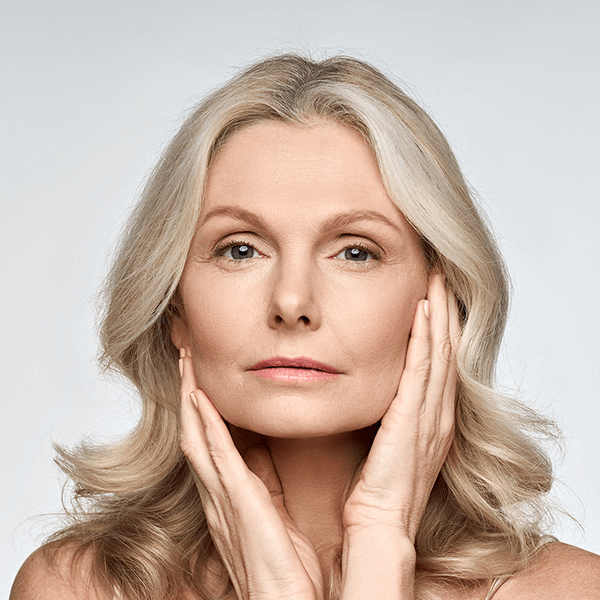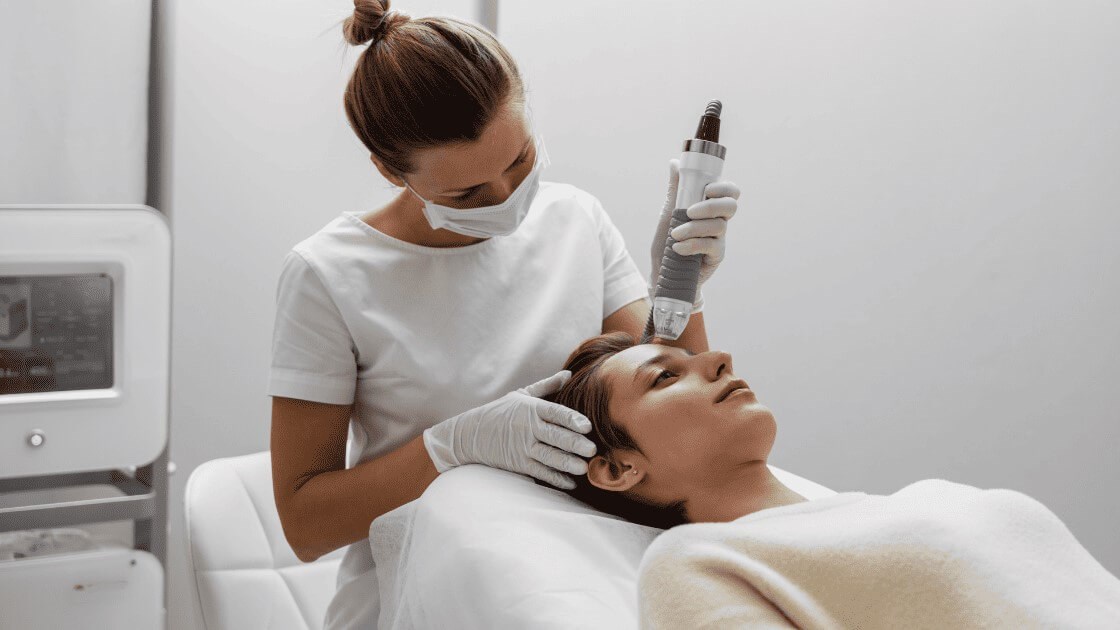How Early Is Too Early? | Anti-Aging Treatments by Age Explained
3/12/2025
How Early Is Too Early? The Truth About Anti-Aging Treatments by Age
If you’ve ever looked in the mirror and thought, “Is it time for me to start anti-aging treatments?”—you’re not alone. Whether you’re 28 and wondering if you need Botox or 45 and worried you waited too long, the question comes up all the time in our office.
Here’s the truth: The best time to start anti-aging treatments is earlier than you think. And no, it’s never too late either! Understanding when to start and what to do at each age can make all the difference in keeping your skin healthy, radiant, and youthful for years to come.
But before we talk treatments, let’s take a moment to understand why your skin ages in the first place—because knowledge is power, and it’s never too early to protect your skin.
The Science of Skin Aging: What You Need to Know
Aging skin isn’t just about time passing. In fact, up to 80% of visible facial aging comes from chronic sun exposure, not the ticking of the clock. Here’s a breakdown of how sun and light exposure directly impact the way your skin looks and feels:
1. UV Radiation & Skin Aging
- UVB (290–320 nm): Primarily responsible for sunburns and direct DNA damage, leading to mutations and skin cancer.
- UVA (320–400 nm): Penetrates deeper into the dermis, breaking down collagen and elastin and creating reactive oxygen species (ROS) that damage skin cells. UVA is the main culprit in photoaging, causing wrinkles, skin laxity, and uneven pigmentation.
2. Photoaging vs. Chronological Aging
- Chronological aging happens naturally over time.
- Photoaging, on the other hand, is the accelerated aging caused by sun exposure.
- Studies show that up to 80% of visible facial aging—including wrinkles, sunspots, sagging skin, and visible blood vessels—is caused by chronic UV exposure, not just aging itself.
3. Collagen Degradation & MMPs
- UVA exposure activates matrix metalloproteinases (MMPs)—enzymes that break down collagen and elastin.
- Over time, chronic UV exposure reduces collagen synthesis and increases collagen degradation, leading to thinner skin, deeper wrinkles, and loss of firmness.
4. DNA Damage & Mutations
- UV radiation can damage DNA in your skin cells, especially in the p53 tumor suppressor gene.
- This damage increases the risk of skin cancers like melanoma and precancerous changes such as actinic keratosis.
5. Inflammation & Immunosuppression
- Chronic UV exposure triggers low-grade inflammation and weakens the skin’s immune defenses, making it harder for your skin to repair itself and fight off abnormal cells.
6. Blue Light & Infrared Radiation
- Blue light (HEV) from screens and infrared-A (IRA) radiation both contribute to oxidative stress, hyperpigmentation, and accelerated aging.
- While blue light’s impact is generally smaller than UV, prolonged exposure in high doses can affect skin health over time.
&srotate=0)
How Our Skin Ages: A Quick Recap
- Collagen production slows by 1% per year starting in your mid-20s.
- Environmental factors—especially sun exposure—speed up this decline.
- Without prevention and intervention, signs of aging like wrinkles, sagging, and sun damage show up faster.
Now that you know why skin ages, let’s talk about when to take action and what to do at every stage of life to protect and preserve your skin’s health.
When to Start Anti-Aging Treatments: Age by Age
Mid-20s: Prevention Starts Now
This is when collagen production begins its slow decline. You may not see visible signs of aging yet—but this is your opportunity to stay ahead of the game.
What to Focus On:
- Daily Sunscreen (Broad-Spectrum SPF 30 or higher)
- The #1 anti-aging product. UV exposure accounts for up to 80% of visible aging.
- Antioxidants (Vitamin C, Niacinamide)
- Helps protect against free radical damage and brightens the skin.
- Retinoids (Retinol or Prescription Retinoids)
- Supports cell turnover and stimulates collagen production.
- Monthly Facials or Light Microneedling
- Keeps skin healthy, hydrated, and stimulates collagen in a gentle way.
Treatments to Consider:
- Hydrafacial®
- Microneedling (Collagen Induction Therapy)
- Light Chemical Peels
- Preventative Botox/Daxxify (for strong muscle movement)
&srotate=0)
Early-to-Mid 30s: Prevention Meets Correction
This is when fine lines may start to show, especially around the eyes and forehead. Skin might start to lose some firmness, and pigmentation or sun spots may surface.
What to Focus On:
- Neuromodulators (Botox®, Daxxify®, Dysport®)
- Softens expression lines and prevents static wrinkles from setting in.
- Microneedling or RF Microneedling
- Stimulates deeper collagen and tightens skin.
- Laser Treatments (Skin Toning, IPL)
- Addresses uneven tone, sun damage, and pigmentation.
- Consistent Medical-Grade Skincare
- Retinoids, peptides, and growth factors should be your go-to.
Treatments to Consider:
- Botox or Daxxify (every 3-4 months)
- RF Microneedling for collagen stimulation
- Laser Skin Toning to combat sun damage
- Chemical Peels for texture and pigmentation
Mid-to-Late 30s and 40s: Repair and Restore
By this time, signs of aging are more noticeable. Volume loss, skin laxity, and deeper wrinkles often become a concern. Fortunately, there are plenty of effective, non-surgical solutions.
What to Focus On:
- Dermal Fillers (Cheeks, Jawline, Lips)
- Restore volume and lift to maintain youthful facial contours.
- PDO Threads
- A non-surgical lift that tightens and stimulates collagen over time.
- RF Microneedling + PRP
- Tightens skin, reduces fine lines, and improves skin quality.
- Laser Resurfacing
- Targets wrinkles, texture, and sun damage more aggressively.
Treatments to Consider:
- Fillers (Juvederm®, Restylane®) for volume loss
- PDO Threads for lifting sagging skin
- RF Microneedling for collagen production and skin tightening
- Laser Resurfacing for deep wrinkles and pigmentation issues
&srotate=0)
50s and Beyond: It’s Never Too Late
If you didn’t start earlier—don’t worry! Modern treatments can deliver incredible results at any age. At this stage, combination therapies often work best for lifting, tightening, and restoring skin health.
What to Focus On:
- Combination Therapies
- Fillers + Threads + Laser for comprehensive rejuvenation.
- Advanced Skin Tightening
- RF Microneedling, laser treatments, and skin boosters like Sculptra®.
- Hydration & Glow
- IV hydration, skin boosters, and regular facials to restore radiance.
What Is "Prejuvenation?"
You’ve probably heard the term “Prejuvenation.” It refers to starting preventative treatments early, before signs of aging become obvious. Studies show that people who start Botox in their 30s have fewer and less severe wrinkles than those who wait until later in life. The goal? Maintain, not reverse.
Your Anti-Aging Plan Should Be as Unique as You Are
The best way to know when and where to start is through a personalized consultation. At Gemini Health & Wellness, we create custom plans designed for your age, goals, and lifestyle—whether you’re in your 20s and looking to prevent, or your 50s and ready to restore.
Ready to Start Your Anti-Aging Journey
Book your consultation today and discover the right treatments for your skin, your age, and your goals. Let’s work together to help you look as vibrant and youthful as you feel!